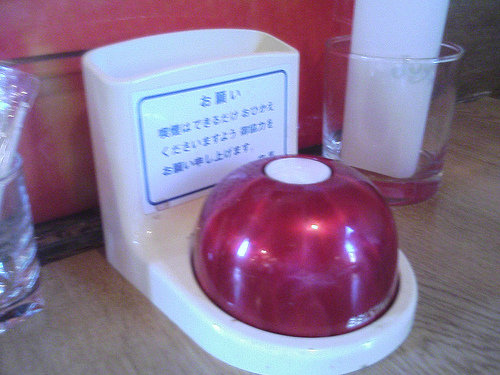History is in all of us, and each nation has its own unique quirks or features that come about as a result of its own past. For the Japanese, the arrival of Perry’s black ships in 1853 brought them face-to-face with the fact that Japan couldn’t stand against nations like the United States and Great Britain. After the “respect the Emperor and expel the foreign barbarians” revolution that ejected the last Tokugawa Shogun in favor of a government formed around the Emperor (which “restored” the Emperor to power, hence the term Meiji Restoration), the country underwent an unprecedented crash program of modernization, retiring the old system of feudal domains (han) for a modern prefectural system based on that of France and introducing education to the people. One of the forces driving this was Japan’s desire to be seen in a positive light by foreigners from the powerful countries of the West, and today, the Japanese are still very concerned about how they appear to gaijin (usually translated as “foreigner,” although a more accurate translation of the term would be “outsider”). Many large-scale public works, such as the first Shinkansen line, seem to be created to coincide with international events like the Olympics, when foreigners would visit Japan in large numbers and “oo and ah” over their technical achievements. It’s like Japan is still trying to prove to the West that they’ve left the backwards feudal nation they were 150 years ago behind.
This tendency to be concerned with the opinions of the International Community manifests itself in many interesting ways. For one thing, the Japanese love nothing more than to have one of their own number recognized internationally. From writers like Kawabata and Mishima to directors like Kurosawa and Miyazaki and the many Japanese athletes who have made names for themselves abroad, the Japanese are always tickled when a local boy makes good. One of the most respected Japanese today is Etsuro Soto, one of two main sculptors working on the Sagrada Famila cathedral in Barcelona, Spain, which gives people here enormous pride. Another Japanese active on the world stage is Ken Okuyama, one of the main designers at Ferrari and the lead force behind the Enzo, who has won design awards for his creations, to the great happiness of Japanese.
Every country is different, and I bump into these little differences just about every day in Japan. Our family dog Chibi passed away last week, but a few months before I remember having a discussion about him with my wife’s family. Although he was old, Chibi was still quite genki (a word that can mean many things, from “I’m fine” to “cheerful” to “energetic,” but in this case “healthy”). But if Chibi were to really get sick, so that he were in pain, I asked, would we have him put to sleep? The room suddenly got very quiet — apparently this is one of those topics you just don’t bring up in Japan, much like estate planning for people before they die or how a person who’s last name means “the rice field by the mountain” can actually believe his ancestors were samurai. Chibi is happy to be alive, I was told, and we would never think of interfering with the number of his days by ending them early. In this, I sensed an incredible respect for life, although the issue of euthanasia for a beloved pet in pain is certainly a difficult question.
















